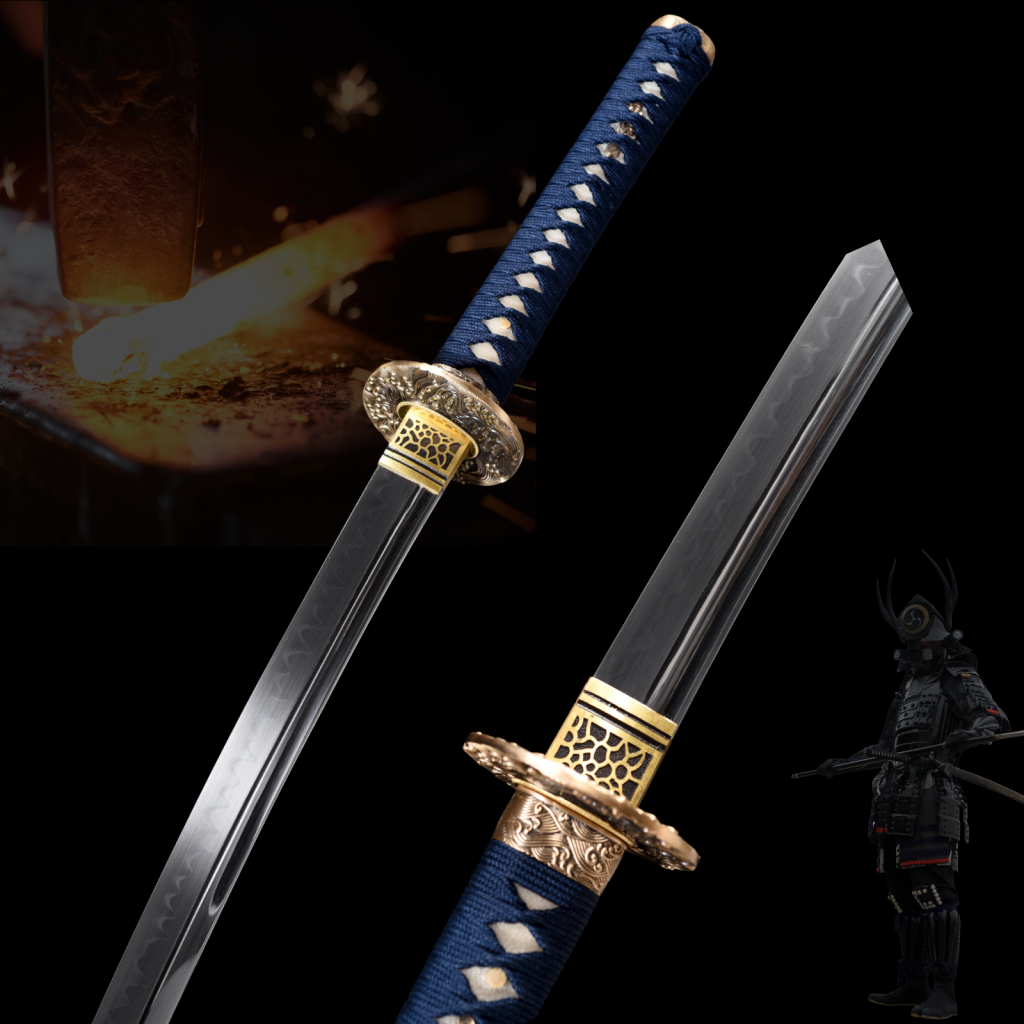The Real Japanese Katana: A UK Buyer’s Guide

The katana is more than just a weapon; it is a piece of living history, a symbol of cultural heritage that melds fire and steel through centuries of traditional artistry. For enthusiasts in the UK, from martial artists to history buffs, the allure of owning an authentic Japanese samurai sword is undeniable. But what truly defines a real katana? How can you distinguish a masterfully crafted blade from a mere replica, and what are the legalities of owning one in the UK?
This guide offers a deep exploration into the world of Japanese katanas. We will uncover the essential characteristics that signify authenticity, from the specific curvature of the blade to the hidden markings on the tang. We will also navigate the legal landscape for buying and selling these swords in the UK, provide tips on identifying genuine articles, and explain how to properly care for your blade. By the end, you’ll have the knowledge to appreciate—and perhaps acquire—your own piece of Japanese legacy.
A Brief History of the Katana
The story of the katana is intertwined with the rise of the samurai, Japan’s legendary warrior class. The precursor to the katana, the tachi, was a longer, more curved sword worn with the edge facing down, ideal for cavalry combat. As warfare shifted to closer-quarters, ground-based fighting during the Muromachi period (1336-1573), the katana was born.
Worn with the edge facing upwards, the katana could be drawn and struck in a single, fluid motion. This efficiency made it the soul of the samurai. Paired with a shorter sword called a wakizashi swords, the set, known as the daisho (“big-little”), became a status symbol, a visible representation of a samurai’s honor and social standing. The craftsmanship was paramount, with swordsmiths holding a revered place in society, their creations seen as embodiments of purity and precision.
Key Characteristics of an Authentic Katana
The genuine appearance of a katana sword is a combination of its forged steel, visible temper line (hamon), and solid construction. A true katana feels balanced and purposeful. Here are the specific features to look for.
Blade Curvature (Sori) and Length (Nagasa)
An authentic katana possesses a graceful, subtle curve known as sori. This curvature is not created by bending the steel but is a natural result of the differential hardening process during quenching. The length of the blade, or nagasa, is typically between 60 and 80 cm (23.6 to 31.5 inches). The combination of its length and curve gives the katana its distinctive profile and contributes to its formidable cutting power.
Steel and Forging (Tamahagane)
The heart of a real katana is its steel. Traditionally, swords are forged from tamahagane, or “jewel steel,” produced in a clay furnace called a tatara. This handmade steel has a varied carbon content, which allows the swordsmith to create a blade with a hard cutting edge (ha) and a softer, more resilient spine (mune). The process of forging a handmade katana is laborious, involving repeatedly heating, hammering, and folding the steel to purify it and distribute the carbon evenly. This folding process can create a faint, wood-grain-like pattern on the blade’s surface, known as jihada.
The Hamon (Temper Line)
One of the most striking features of a katana is the hamon, the visible line that separates the hardened edge from the softer spine. Before quenching, the smith coats the blade with a special mixture of clay, charcoal, and other secret ingredients, applying a thicker layer on the spine and a thinner one along the edge. When heated and plunged into water, the edge cools rapidly to become extremely hard, while the spine cools more slowly, remaining flexible. The hamon is the visual result of this process, appearing as a beautiful, often wavy or irregular pattern. Each hamon is unique and serves as a swordsmith’s signature.
The Tang (Nakago)
The tang, or nakago, is the unpolished part of the blade that extends into the hilt (tsuka). This is one of the most crucial areas for authentication. The nakago should show signs of age and forging, with file marks (yasurime) and a patina of rust that develops over time. Most importantly, it may bear the swordsmith’s signature (mei), which provides information about the maker and the era of production. A pristine, polished tang is often a red flag.
The Fittings (Koshirae)
While the blade is the soul of the sword, the fittings, or koshirae, are its dress. These components are works of art in their own right and include:
- Tsuba (Guard):The handguard, often ornately decorated with intricate designs.
- Menuki:Small ornaments placed under the handle wrapping (tsuka-ito) to improve grip.
- Fuchi and Kashira:The collar and pommel cap on the handle.
- Tsuka:The handle, traditionally made of wood and covered in ray skin (samegawa).
Authentic fittings will show signs of skilled craftsmanship and are often made from high-quality materials.
Owning a Katana in the UK: The Legal Side
Understanding the law is crucial for anyone looking to buy katana swords in the UK. The Criminal Justice Act 1988 (Offensive Weapons) Order 1988 was amended in 2008 to place restrictions on swords with a curved blade of 50 cm or more. However, there are important exemptions.
It is legal to own such a sword if it was:
- Made before 1954.
- Made by traditional hand-forging methods.
This means that genuine, traditionally made samurai swords, both antique and modern, are legal to own. Mass-produced, machine-made replicas are generally illegal to buy, sell, or import. It is essential to ensure that any katana for sale you consider meets these criteria. Always buy from reputable dealers who can provide evidence of the sword’s traditional manufacturing.
Spotting Fakes and Replicas
With a thriving market for samurai swords in the UK, it’s vital to be cautious. Here are some tips to spot fakes:
- Look for an etched Hamon:Many cheap replicas have an acid-etched hamon that looks like a frosted pattern on the blade, rather than a genuine crystalline structure.
- Check the Tang:A fake katana might have a welded tang (rat-tail tang) or a tang that is clean and unmarked.
- Examine the Fittings:Poorly made, cast-metal fittings are common on replicas. Authentic fittings are finely detailed.
- Ask for Documentation:Reputable dealers will provide paperwork, such as authentication papers from organizations like the NBTHK (Nihon Bijutsu Token Hozon Kyokai), which certify the sword’s authenticity and quality.
Where to Buy Real Katana Swords UK
When looking for a Katana for sale, prioritize reputable sources.
- Specialist Sword Dealers:In the UK, there are several dealers specializing in Japanese swords. They have the expertise to verify authenticity and can provide the necessary documentation.
- Online Marketplaces:While convenient, these require extra caution. Only buy from sellers with a long history of positive reviews and a clear returns policy.
- Auctions:Auctions can be a source of antique katanas, but it’s best to attend with an expert or have a specialist inspect the item beforehand.
Caring for Your Katana
A real katana is a piece of art that requires proper care.
- Cleaning:Use a traditional cleaning kit (choji oil, rice paper, and a powder ball) to clean the blade regularly. Avoid touching the polished blade with your bare hands, as skin oils can cause rust.
- Storage:Store the sword horizontally in its scabbard (saya), with the edge facing up to prevent it from resting on its own weight. Keep it in a dry, stable environment to avoid rust and damage to the fittings.
A Legacy of Steel and Spirit
The Japanese katana is far more than an antique weapon; it is an embodiment of tradition, a testament to the mastery of its creator. For collectors and practitioners in the UK, owning a real katana is about connecting with a rich cultural heritage. By understanding its key characteristics and the legal requirements, you can confidently explore the world of samurai swords and perhaps find a piece of living history to call your own.
Take the time to study, to appreciate the artistry, and to respect the legacy of these magnificent blades. The journey into the world of the katana is a reward in itself.
Meta Data
Meta title
Real Japanese Katana: A UK Buyer’s Guide to Authentic Swords
Meta description
Looking for a katana for sale in the UK? Learn to identify the characteristics of authentic samurai swords and navigate UK sword laws with our expert guide.


